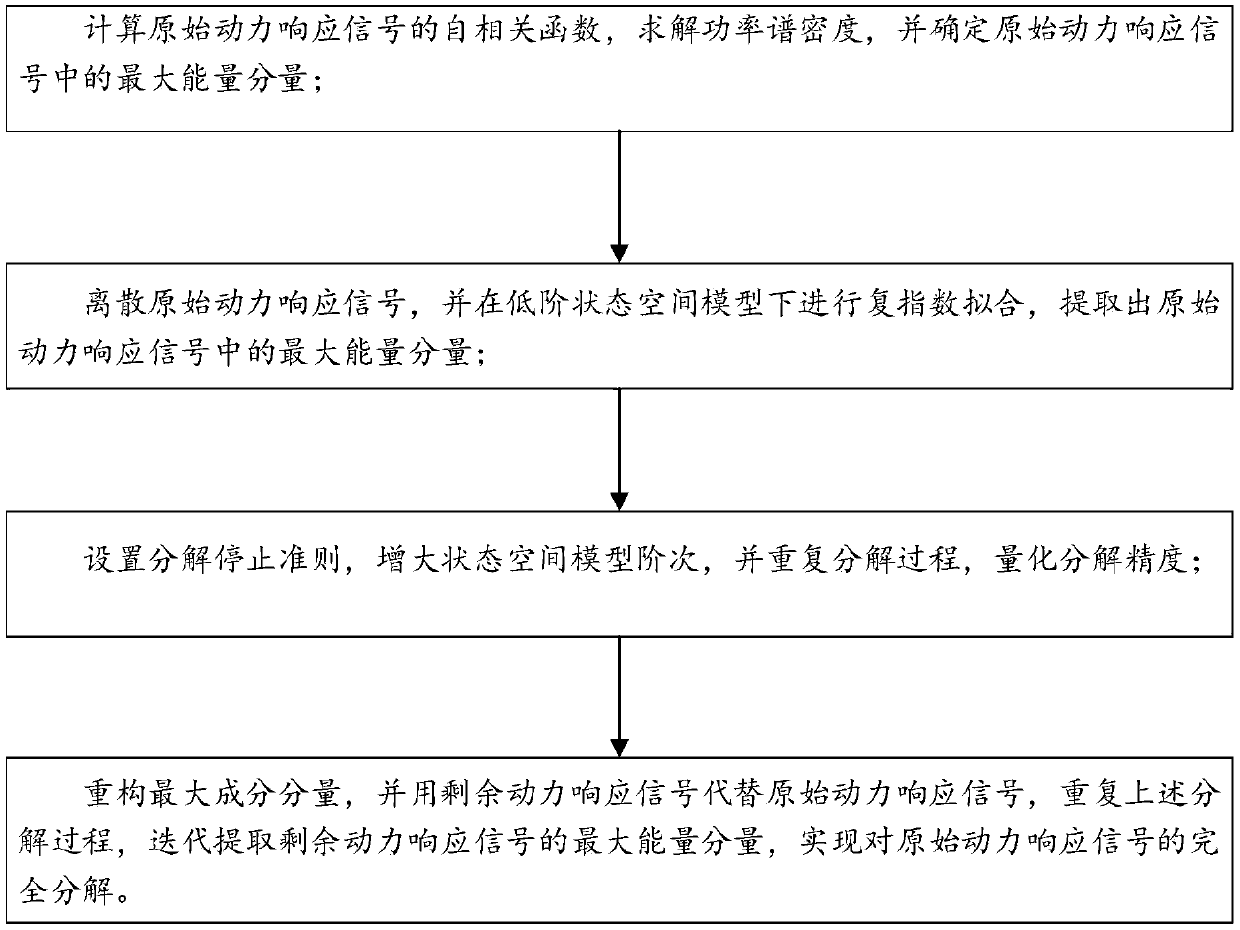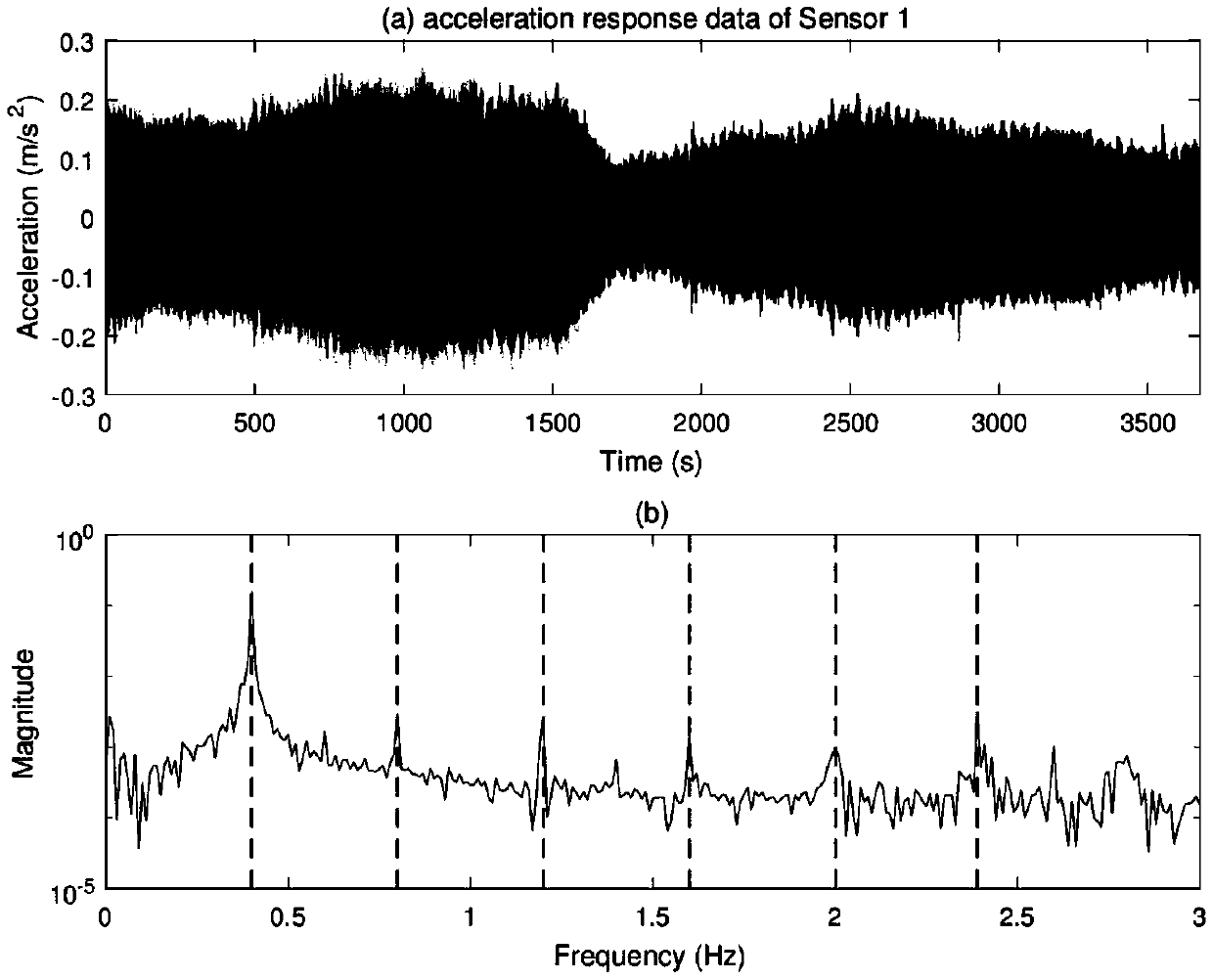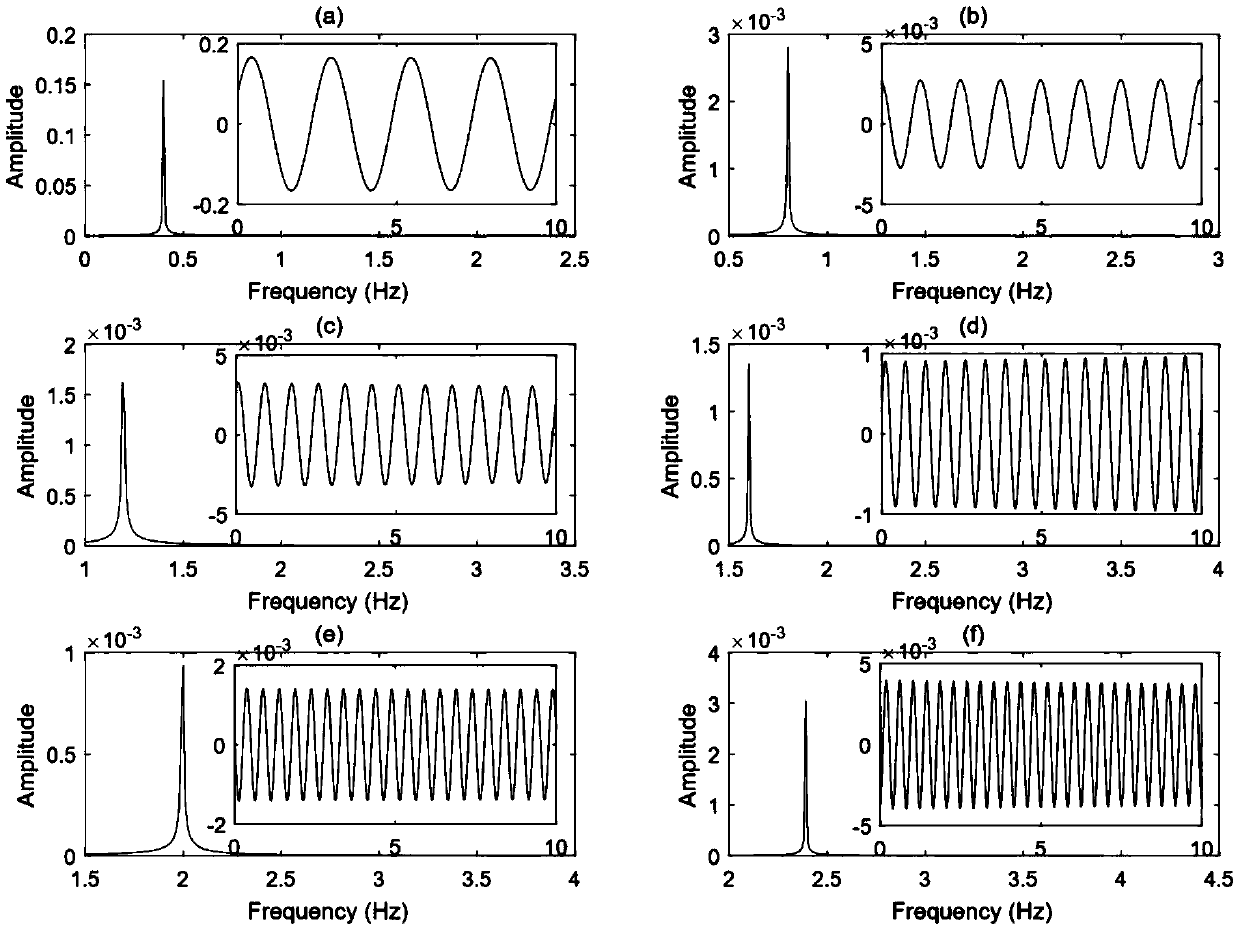Maritime work structure actual measurement signal maximum energy iterative extraction method
A technology of maximum energy and marine structure, applied in the field of signal decomposition, can solve problems such as decomposition failure, difficult to achieve accuracy, and modal mixing
- Summary
- Abstract
- Description
- Claims
- Application Information
AI Technical Summary
Problems solved by technology
Method used
Image
Examples
Embodiment Construction
[0065] Hereinafter, specific embodiments of the present invention will be further described in conjunction with the accompanying drawings.
[0066] For the decomposition of dynamic response signals of marine engineering structures, most of the existing traditional decomposition methods decompose the signal into a series of components at one time, without considering the accuracy requirements of each decomposition component; the method based on empirical mode decomposition is based on the frequency. The signal components are extracted one by one, but due to problems such as modal aliasing, the accuracy is usually poor when dealing with marine engineering dynamic response signals. The main idea of the present invention is to extract the maximum energy component from the dynamic response signal one by one, so as to realize the complete decomposition of the signal, and the biggest difficulty in realizing this goal is how to accurately extract each maximum energy component with th...
PUM
 Login to View More
Login to View More Abstract
Description
Claims
Application Information
 Login to View More
Login to View More - R&D
- Intellectual Property
- Life Sciences
- Materials
- Tech Scout
- Unparalleled Data Quality
- Higher Quality Content
- 60% Fewer Hallucinations
Browse by: Latest US Patents, China's latest patents, Technical Efficacy Thesaurus, Application Domain, Technology Topic, Popular Technical Reports.
© 2025 PatSnap. All rights reserved.Legal|Privacy policy|Modern Slavery Act Transparency Statement|Sitemap|About US| Contact US: help@patsnap.com



